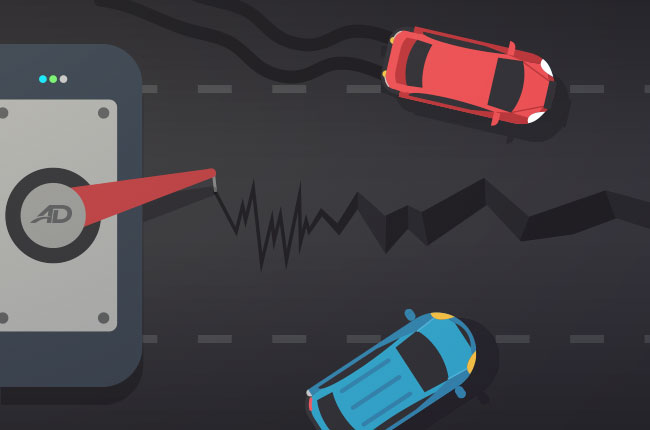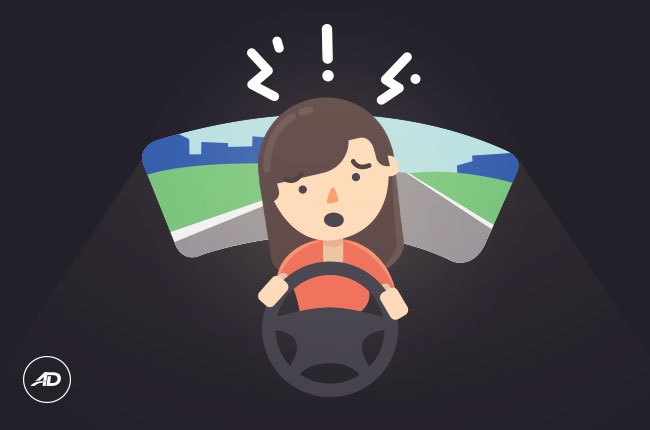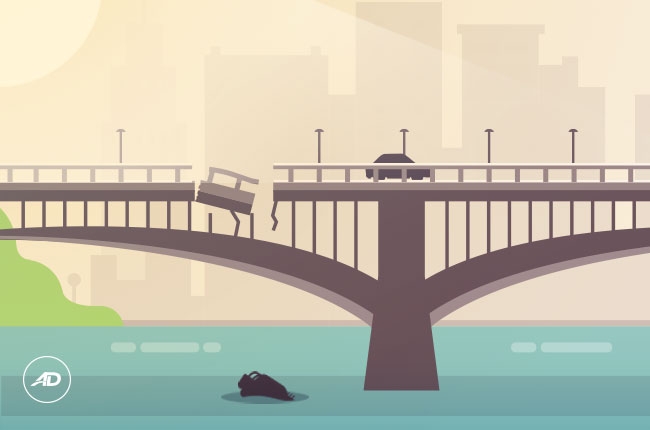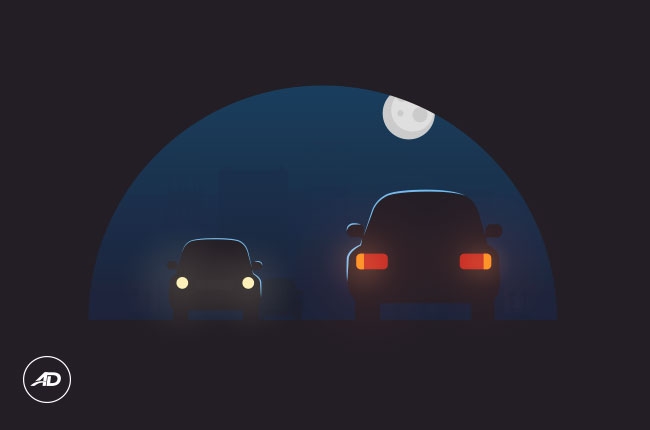
Earthquakes are one of those natural disasters that instill fear into people’s minds. Unlike floods (especially in some parts of Makati and Manila), they're totally unpredictable. They could strike anytime – in your deepest sleep, while you're having a scrumptious meal, or even while you're driving.
Growing up, we have been taught to duck, roll, and take cover during an earthquake. However, what if you're inside a car? What should you do to increase your chances of survival?

Don't panic
Chances are, you won't notice that the ground is shaking when you're driving. However, as the intensity of the earthquake increases, you will feel like your tires are wobbling (or like you have a flat tire). When this happens, don’t give in to panic and make sure that you seat belts are fastened. Your concentration is needed so you can be at the right place, at the right time.
Stay in your car
Your car has more mobility than you on foot, and worse comes to worst, it can also serve as your protection and shield against falling debris. Furthermore, gradually decrease your speed and observe your surroundings. That way, you can plan your next move and position yourself into safety.

Drive to an open spot
It is common knowledge that earthquakes can bring down buildings, houses, footbridges, lamp posts, traffic signs, and even trees. With that in mind, carefully drive yourself to an open road or spot to avoid getting crushed or get hit by other cars.
In addition, one of the first victims of earthquakes are bridges and flyovers, as these are elevated infrastructures that are at the mercy of their pillars and how they were built. Don't ever take them. More so, move away from these areas, especially if you're under them.

Park to safety
If you’ve found a spot from the step above, go ahead and park. However, stay alert and observe your surroundings. It will also help if you can turn on your car’s radio and wait for announcements from the local government. Usually, earthquakes come with aftershocks, so it's better to stay in your place until it has been deemed clear.
Situational:

When on a bridge or flyover
As mentioned, it's best to get out of a bridge or a flyover during an earthquake. However, if you find yourself trapped in one, your best chance of survival is to determine where its support pillars are located. Usually, they are the cement breaks on the bridge's rail and oftentimes where the lamp posts are situated at.
Drive by these spots as they will serve as your foothold in case the bridge breaks down, thus, lessening your chance of falling down. If you’re unable to do so with your car, leave your vehicle and stay by the support pillars. Beware, though, intense earthquakes can also bring down the cement pillars, so if you can, try to drive off the bridge as soon as you can.

When in a tunnel
Like bridges, tunnels are the worst places you can be driving by when an earthquake strikes. Getting trapped inside them doesn't only lessen the chances of survival, victims are also hard to rescue.
In case you run out of luck, carefully drive yourself out of the tunnel. If you're trapped in a traffic jam and the earthquake is pretty intense, leave your vehicle and run out to the nearest exit.
Here’s the tricky part: if it's a long tunnel, stay inside the car and get a hold of food and water (if available). It's still better to be trapped inside the car than to be crushed while running out to safety. If you have an emergency kit inside the car, it should also be within arms reach.

After the shock
Check yourself and passengers for injuries – administer first aid if needed. Watch out for updates from the authorities. If you're in a place near the sea, wait for the tsunami warnings so you'll know if the coast you’re in isn’t safe anymore.
In addition, don't proceed to drive anywhere yet if possible. However, if you need to do so, check the roads and infrastructures for cracks and damages. Avoid driving through dilapidated streets and fallen power lines, as well as bridges and flyovers. Lastly, take note of the places that are not passable to vehicles.
While protecting your car is understandable, your safety during an earthquake is still more valuable than any other investment you worked hard for. It pays to be informed, so take note of these things we mentioned. These could save your life and everyone else’s you care about.
Latest Features
-
The 6 things every Ford Ranger must pass before it leaves the factory / Featured Article
Every Ford Ranger, from the base model to the Ranger Raptor, goes through a full inspection process before it leaves the factory. This includes six steps that make sure it’s ready to drive a...
-
Which GAC AION EV is best for your everyday lifestyle? / Featured Article
The GAC AION lineup has something for everyone, maybe you're after space, speed, or just a smooth city drive. Here's a quick breakdown of which model might work best for your day-to-day life...
-
The AutoDeal Awards 2024: Celebrating excellence in the auto Industry / Featured Article
The AutoDeal Awards 2024: Celebrating excellence in the auto Industry
Popular Articles
-
Cheapest cars under P700,000 in the Philippines
Jerome Tresvalles · Sep 02, 2024
-
First car or next car, the Ford EcoSport is a tough package to beat
Jun 18, 2021
-
Car Maintenance checklist and guide – here’s everything you need to know
Earl Lee · Jan 12, 2021
-
Most fuel efficient family cars in the Philippines
Bryan Aaron Rivera · Nov 27, 2020
-
2021 Geely Okavango — Everything you need to know
Joey Deriquito · Nov 19, 2020
-
Family cars in the Philippines with the biggest trunks
Sep 20, 2023
-
Head to head: Toyota Rush vs. Suzuki XL7
Joey Deriquito · Oct 28, 2020
-
Why oil changes are important for your car
Earl Lee · Nov 10, 2020
-
2021 Kia Stonic — What you need to know about it
Joey Deriquito · Oct 16, 2020
-
Top 7 tips for buying a used car in the Philippines
Joey Deriquito · Nov 26, 2020



